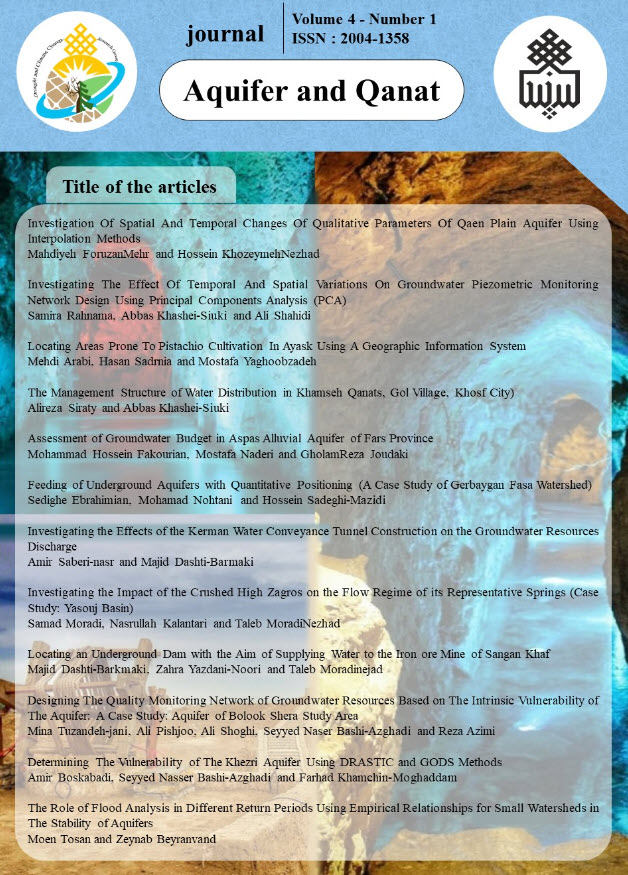Document Type : Original Article
Authors
Yazd university
Abstract
Droughts, which affect the economy, the environment, migration, groundwater depletion, and many other problems, have posed serious challenges to humans. The aim of this study was to investigate the trend of groundwater changes in piezometric wells and the effect of precipitation on groundwater fluctuations in the Bafgh Basin during a 14-year period (2003-2016). The data were then adjusted and analyzed on a quarterly and annual average. Therefore, using the non-parametric Mann-Kendall statistical method, the significance of precipitation trend and groundwater level was investigated. Also, using Sen's line slope estimator method, the slope of the trend line was tested. The results showed that there is no significant trend in rainfall at Bafgh station. However, the output of Sen's test statistics at 99% and 95% probability levels confirms an increase of 0.8 mm of precipitation per year. It was also found that the water level is declining in most of the wells. This amount of reduction varies in the basin of each well and each year in well number 81, 50 cm decrease, wells number 7 and 39, 40 cm decrease, wells 16 and 11, respectively, have recorded a decrease of 20 cm in the groundwater level trend. It was also found that there was a significant correlation between precipitation fluctuations and groundwater changes (GRI) in piezometric wells No. 7 and 74 on a 3-month scale at a confidence level of 0.05, which increased with a time scale of 6 to 48 months. Confidence level 0/01 becomes significant.
Keywords
Main Subjects

